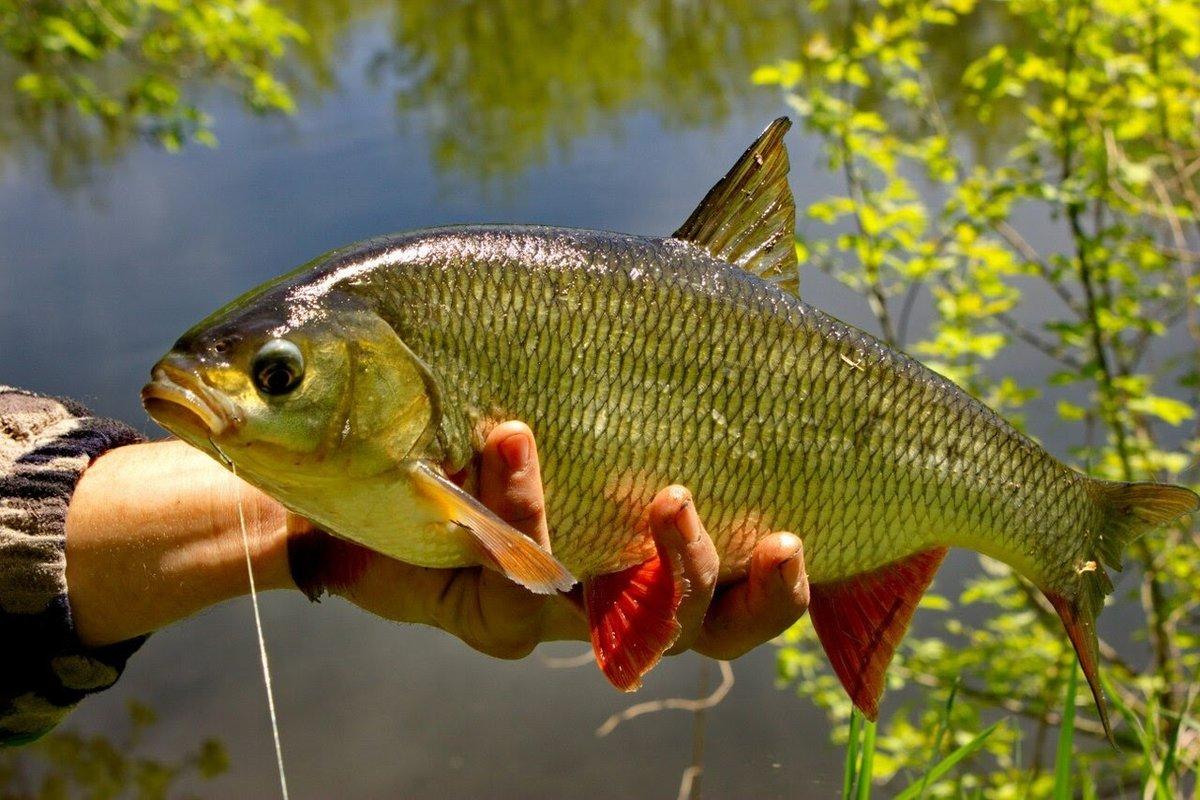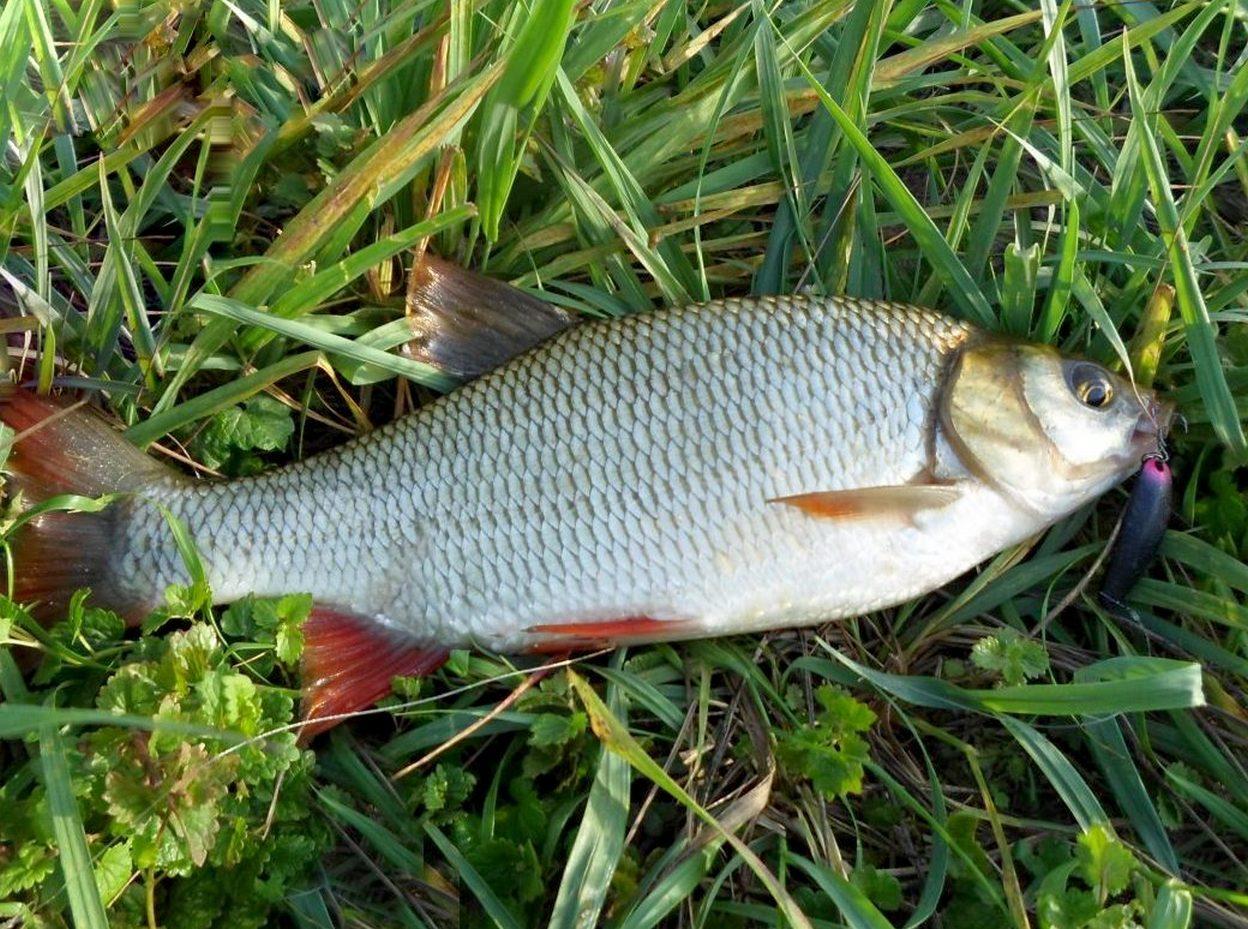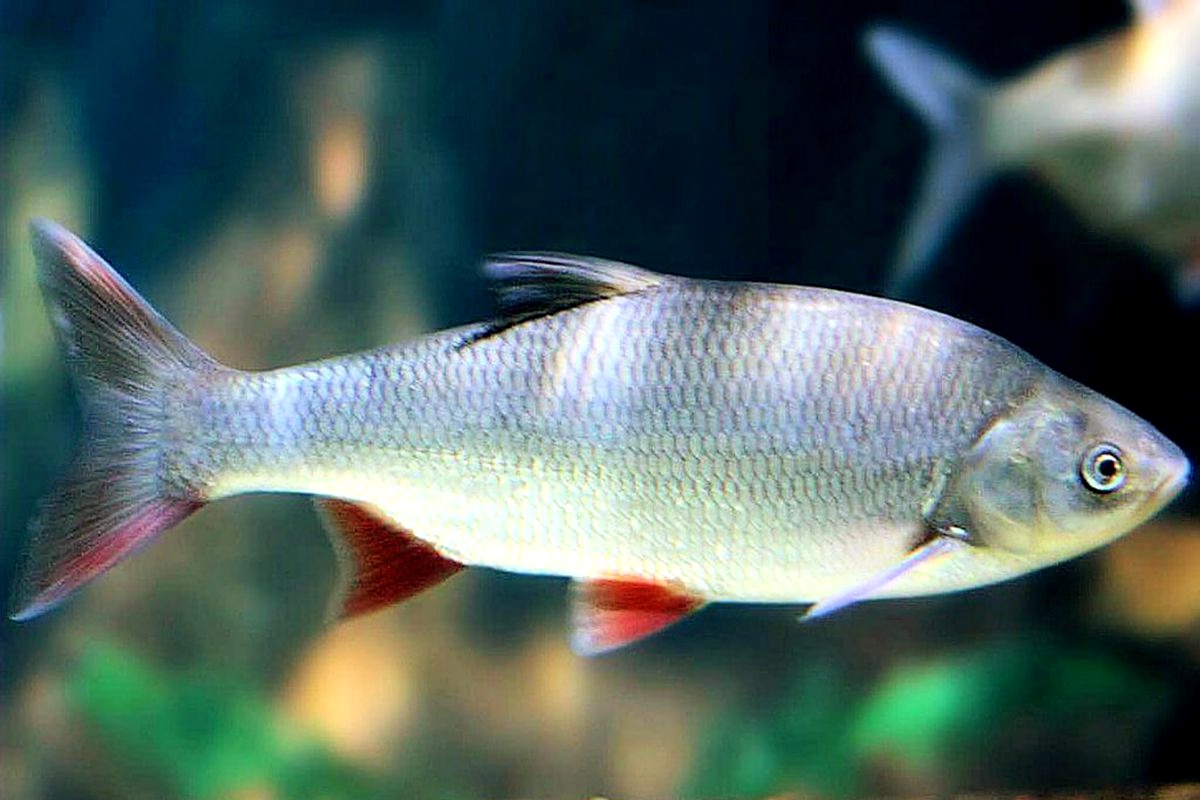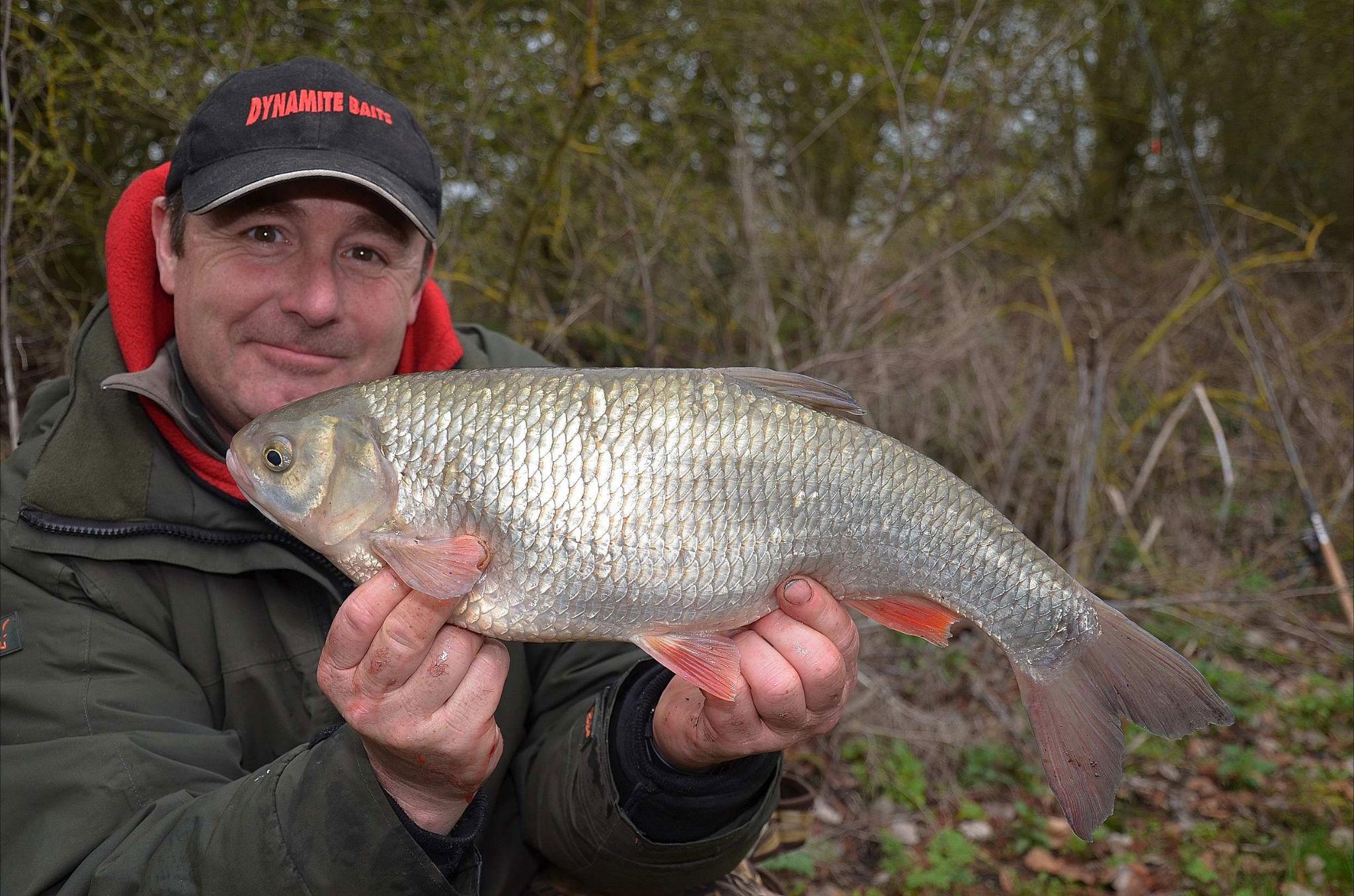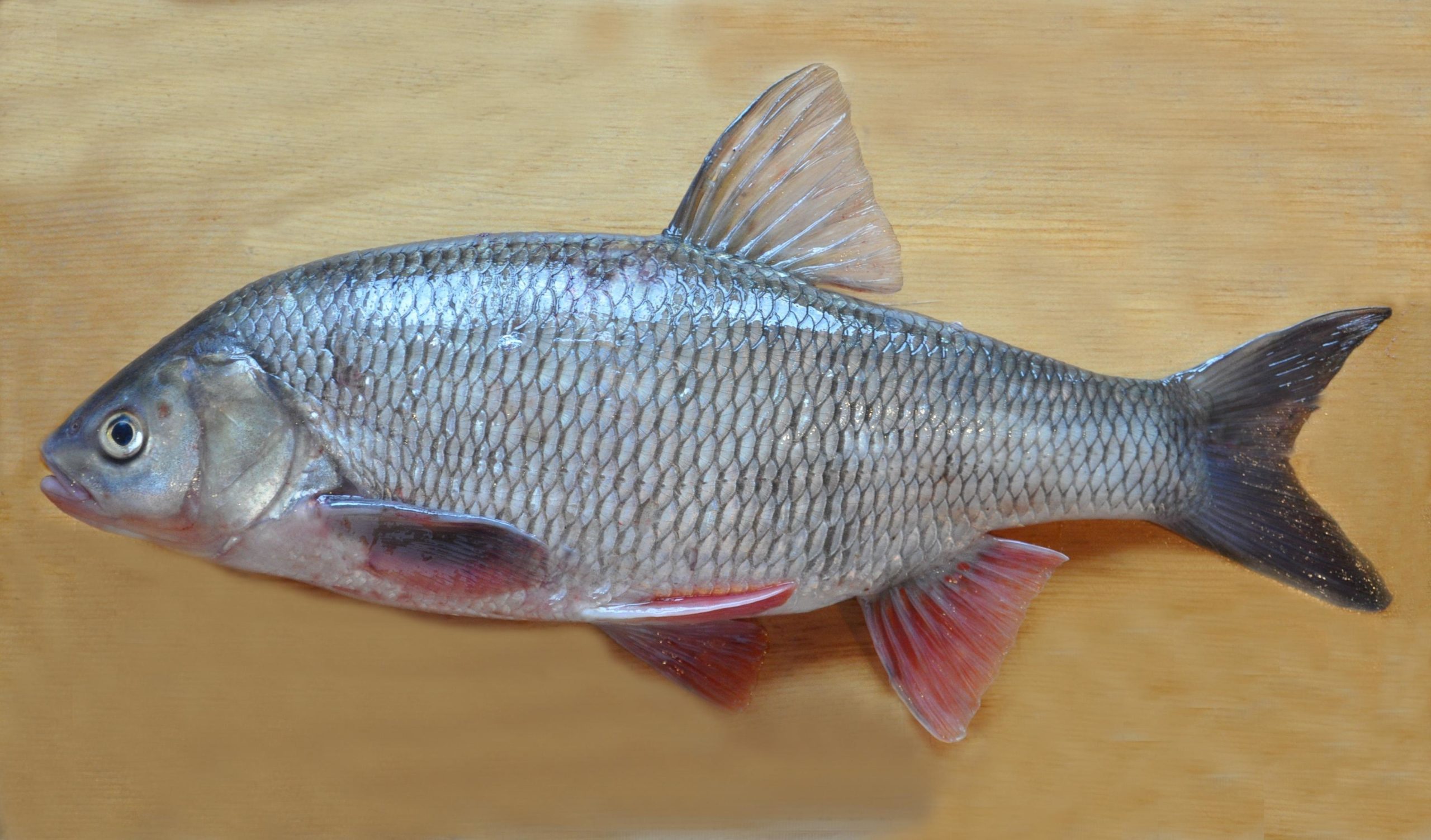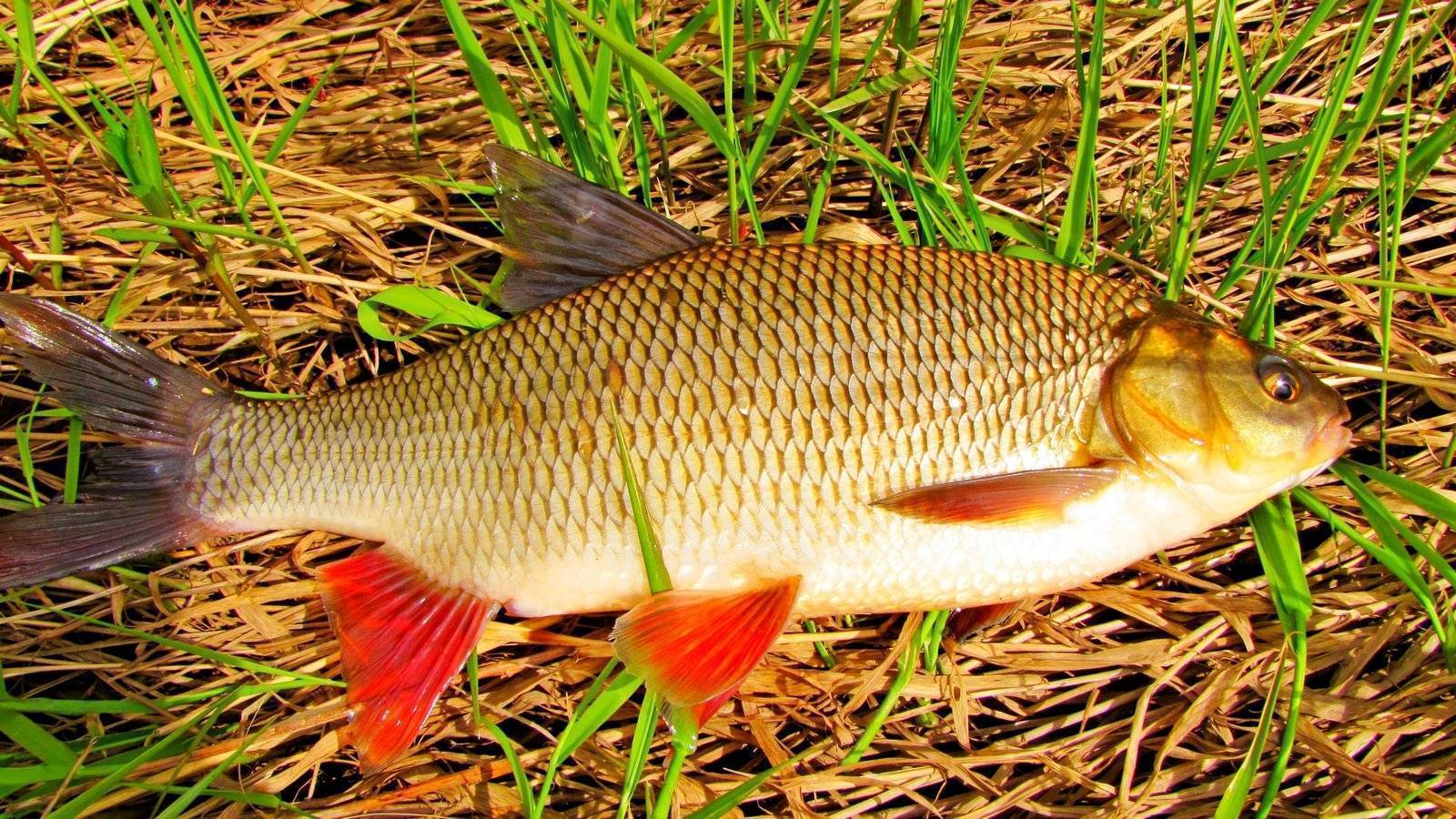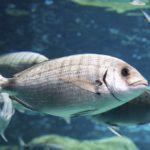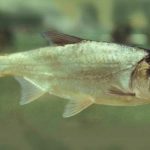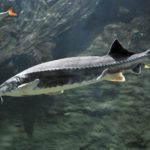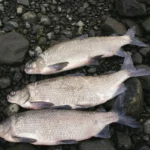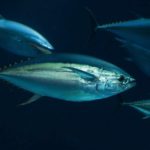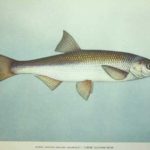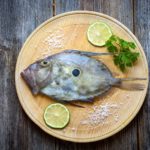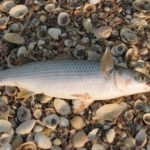The common ide, a representative of fish from the carp family, is highly valued in Russia. Fish are especially loved by this semi-predatory inhabitant of water bodies, because it can be found everywhere in rivers, flowing lakes and river ponds. Ide prefers to live in areas with a silt-clay bottom, usually located near bridges or in places with dense bushes along the banks.
What kind of fish is this
For a serious fisherman, a catch whose size does not exceed 30 centimeters is not a reason to be proud.According to the description, juveniles of this species tend to be lighter in color, sometimes with a silvery sheen. In addition, the fins are not as brightly colored as those of mature individuals. When the fish reaches adulthood, its color intensifies and becomes much brighter.
In general, ide is a fish of impressive size. Its maximum size reaches 60 centimeters in length, and its weight can range from two to three kilograms. There was evidence of catching individuals reaching 90 centimeters and weighing 6 kilograms. As a rule, they live 10-15 years, but there are cases where some of them lived up to 20 years or more.
Since 2005, Russian ide has been placed under legal protection, which means that catching and storing this river fish is prohibited during early spring. During the rest of the year, you can freely catch ide and supply the goods to fish markets.
This fish is in demand by buyers due to its delicious taste, like all carp fish. It is also a nutritious food for humans given its high content of proteins, amino acids, vitamins and minerals. This makes ide an attractive option for those looking to maintain a healthy lifestyle.
Ide is similar to roach and chub. It has a strong body with a small head and an angular mouth. Its color is bright; the scales shine and appear golden, then silver, light greenish-gray, dark gray, blue on the back and almost white on the sides. During the breeding season in spring, its head takes on a golden hue.
The sparkling appearance is decorated with bright red side and lower fins, as well as purple upper and tail fins. The eyes are greenish-yellow, marked by a dark spot above them. During the mating season, males develop whitish spots on their heads.
These fish have a varied diet that includes algae and other plant matter, but will also happily consume small fish, crustaceans and frogs. Even young ides eat small crustaceans, crabs and insect larvae without any problems.
Habitat
This fish from the carp family is found almost throughout Europe, usually in rivers and lakes with slow currents and considerable depth. They are also found in river ponds. In Russia, they can be found in the Ural river basin, in Siberian and Yakut waters, rivers of the Black Sea and northern Caspian waters.
Ide is a hardy freshwater fish that can adapt to changing water temperatures, tolerate minor pollution of the aquatic environment and does not go dormant for the winter. It is not alien to minor levels of water salinity - it can live both in places where rivers flow into the seas, and in the seas themselves, if there is a low salt concentration there.
This type of fish is usually bred by farmers. After being released into a pond as fry in the third year of life, they usually weigh about half a kilogram. It is an undemanding eater and does not require much effort to feed.
What does ide taste like?
The flesh of carp tastes delicious, just like any other member of the carp family. It is light and crumbly, has a creamy white color. The taste is pleasant, with a slight sweetness. There is no irritating odor that usually comes from river fish.
The only disadvantage of fish is that it contains a lot of both large and small bones. Ide lovers have found ways to cope with this problem, for example, grinding the pulp into minced meat for cutlets or meatballs. Another option is to simmer fish in vegetable oil until the bones soften, creating homemade canned fish.Additionally, marinating the flesh in a vinegar solution can make it more brittle and make it easier to remove the bones.
Vitamins and substances in fish
The benefits of fish products are undeniable. Let's look at what substances are contained in ide:
- Proteins: 20.2 g.
- Fat: 3.8 g (including omega-3 polyunsaturated fatty acids, which lower blood cholesterol and reduce the risk of cardiovascular disease).
- Carbohydrates: 0 g.
- Calories: 98 kcal.
Also, 100 grams of ide fish fillet contains a significant amount of microelements and vitamins, including:
- Phosphorus: 246 mg.
- Potassium: 344 mg.
- Magnesium: 34 mg.
- Calcium: 11 mg.
- Iron: 0.7 mg.
- Magnesium: 26 mg.
- Vitamin B12: 3 mcg.
- Niacin (vitamin B3): 6.8 mg.
- Pyridoxine (vitamin B6): 0.7 mg.
- Riboflavin (vitamin B2): 0.1 mg.
- Thiamine (vitamin B1): 0.1 mg.
Ide fish fillets also contain vitamin A, vitamin E, vitamin K, selenium and copper in small quantities. These nutrients also regulate the acid-base balance in the body.
Beneficial features
You can add ide meat to your diet without hesitation, even if a person is on a diet. It contains essential nutrients that improve the functioning of the human body and make you look good.
Ide is recommended in such cases as:
- recovery after serious illnesses, operations;
- high levels of stress;
- living in extreme climates.
In addition, people with diabetes, gastritis, stomach ulcers, osteoporosis or atherosclerosis, as well as thyroid problems can benefit from regular consumption of this fish meat.
The nutritional and caloric content of the product remains relatively unchanged during processing.During drying, a certain concentration of certain substances occurs due to loss of moisture, but during hot smoking, the calorie content increases sharply.
Ide fillet contains a large amount of protein, which is good for children, as it helps the development and growth of cells. Adults know about its benefits and strive to consume more to maintain strength, vitality, youth and beauty.
Why is ide dangerous?
The risk associated with eating ide is due to the fact that it lives in a polluted environment. Consequently, its flesh absorbs harmful substances such as pesticides, radioactive particles and heavy metals from the body of water, making it toxic and unsafe for human consumption. Additionally, people who suffer from high blood pressure or kidney problems are not advised to consume salted or dried ide.
Ide is a fish with small bones. It is important to know that the smallest bone can cause harm if swallowed, such as damage to the intestines, stomach, esophagus or throat. Therefore, it is not recommended to feed it to small children.
The disadvantages of this freshwater fish include:
- Risk of allergic reactions.
- Short shelf life.
- Risk of parasite infection from eating undercooked or contaminated meat.
In addition, according to nutritionists, river fish is less nutritious than sea fish. Experts do not advise getting carried away with eating smoked fish because of its carcinogenic properties, which can lead to cancer.
Cooking tips
Cleaning ide is not difficult. The scales come off easily from the sides, and all you need is a regular knife.Removing scales from the belly area may be a little more difficult, but does not require any special tools such as steel jaws or graters. In just two minutes the fish will be ready to eat.
Despite the presence of bones, cooks have come up with various ways to prepare fish. You will get a delicious ide if you cook it in the oven. Homemade canned fish is also a great way to use it. The meat can also be minced and used for cutlets. Dried and smoked ide is a popular delicacy for beer lovers.
How to salt
If you want to enjoy salted roach, this can easily be done using the dry method. You should do the following:
- Combine salt (1 kg) and sugar (50 g) to create a rub, which is then applied to the fish.
- Place a layer of fish on the bottom of the dish, where a layer of salt has already been placed, and season the top with pepper and salt.
- Make another layer, also seasoning it with more salt.
- Cover with either a lid or a plate whose diameter is smaller than that of the dish, and place something heavy on top, for example, a three-liter jar of water.
- Leave in a cool place for four days.
When the dish is ready, it will become a pleasant treat for lovers of salted fish, without significantly decreasing in size.
Frying
If the ide is large, it should be cut into several pieces. Smaller fish can be fried whole. Initially, it is useful to marinate the ide with salt, pepper and a small amount of lemon juice. Leave it for a while to allow the flavors to absorb.
The next step is to roll the pieces in either flour or crushed breadcrumbs and fry them in vegetable oil until golden brown and crispy on the outside.The meat inside will become soft and melt when tasting.
Ingredients for a simple recipe:
- 4 fillets.
- 2 tablespoons olive oil.
- 1 cup whole wheat flour.
- 1 teaspoon garlic powder.
- 1/2 teaspoon onion powder.
- Salt and freshly ground black pepper to taste.
Instructions:
- Heat olive oil in a large frying pan over low heat.
- In a shallow bowl, whisk together flour, garlic powder, onion powder and season with salt and pepper. Dredge fish fillets in flour mixture until all sides are completely coated.
- Place fillets in skillet and cook until lightly golden brown on both sides, about 3 minutes per side or until desired doneness.
Serve immediately with your favorite sauces and side dishes.
Baking
You can prepare ide in various ways, for example, bake it in the oven with vegetable filling or in foil. This fish is best suited for grilling. To achieve a delicious crust, marinate the fish and grill it on both sides or wrap it in foil for a soft and juicy dish.
Chefs have a strategy for dealing with small bones in fish. Before they bake it, they make shallow slits throughout the fish, one centimeter apart, causing the small bones to fall apart. This softens them and allows them to dissolve into the finished dish. Lemon, onion and potatoes are ideal for baked fish. Sauces that go well include sour cream, cream or mayonnaise.
Smoking
You need to take salted fish. The salt will have to be removed and the carcass dried.Hot smoked fish can be prepared in an hour by coating the carcasses with vegetable oil and placing them on racks; it is also recommended to put spacers in the belly.
Step by step steps:
- Prepare some wood chips, such as applewood, based on the type of flavor you want.
- Soak the ide in brine for several hours so that it is completely saturated with seasonings and aroma. When finished, pat the fish dry with paper towels and place on the rack inside the smoker.
- Fill the water pan under the grate with cold water (this will help regulate the temperature during cooking) and add wood chips to create smoke in the smoker or grill chamber. Add any additional seasonings before closing the lid and setting the temperature to your desired temperature (usually between 200-225F).
- Cooking time may vary depending on the thickness of the fish, but in general it should take no more than 1-2 hours at most temperatures. Once cooked, remove from heat and allow to cool before serving.
If you are using a closed device for smoking, be sure to open it slightly during the process to allow some steam to escape. The result is a beautiful, golden-colored fish with great flavor.
Cold smoking takes longer than other methods. The smokehouse temperature is maintained below 30°C and the fish is suspended in the smoke for a minimum of 72 hours. After this, the fish is placed in a cabinet for several hours and then ventilated for 24 hours. Hot smoked fish can be stored in the refrigerator, wrapped in paper, for 3-4 days, while cold smoked fish can last up to two weeks if stored similarly.
How to catch ide
Ide can be caught all year round, with the most active bite occurring in spring and autumn. There is less activity in summer and winter.
To protect the fish population, it is best to avoid fishing during spawning, which occurs in early spring when individuals travel upstream distances of more than 150 kilometers.
After a month, the fish return to the places where they lived in the summer. During the hot season, they can be easily caught using any type of fishing rod. For winter fishing, anglers equip themselves with specific equipment: a nod and a fishing rod with a float, as well as bloodworms and worms. It is difficult to catch such fish when the air temperature is extremely low. Except for this period of time, ide usually provides anglers with an excellent bite.

